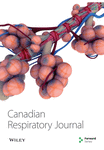Evaluation of Malignant Mesothelioma in Central Anatolia: A Study of 67 Cases
Abstract
BACKROUND: Malignant mesothelioma (MM) is a fatal neoplasm which frequently results from exposure to asbestos or erionite.
METHOD: Sixty-seven patients with MM were seen between 1990 and 2001. Their clinical and radiological features, as well as the therapy, were retrospectively evaluated.
RESULTS: In 51 patients (76.1%), the MM was confined to the pleura, in 14 patients it was exclusively peritoneal and in two patients, it involved both areas. Of the 67 cases, 35 (52.2%) were women. The mean (± SD) age for all cases was 57.6±11.5 years. Dyspnea (67.2%), cough (55.2%) and chest pain (50.7%) were the most frequent symptoms of onset. Pleural effusion (92.4%) was the most common chest x-ray finding, whereas pleural effusion (60.8%), pleural nodules (34.7%) and pleural thickening (34.7%) were the most common computed tomography findings in pleural MM patients. The histological subtypes of MM were determined as epithelial in 60 patients (89.5%), sarcomatous in four patients (5.9%) and mixed in three patients (4.4%). Although 50.7% and 25.4% of the cases were exposed to erionite and asbestos, respectively, 23.9% of the cases recalled no exposure to asbestos or erionite. Exposures were environmental as opposed to occupational. Thirty-five patients (52.2%) were administered chemotherapy, and follow-up data were available for 22 patients. For these patients, the two-year survival rate was 22% and the two-year progression-free interval was 15.7%. There were no differences between patients with asbestos and erionite exposure.
CONCLUSION: MM should be considered when exudative pleural effusion is detected in a patient who has been exposed to asbestos or erionite. MM is a major public health problem in parts of Turkey and compulsory environmental control of fibrous mineral should be considered.




